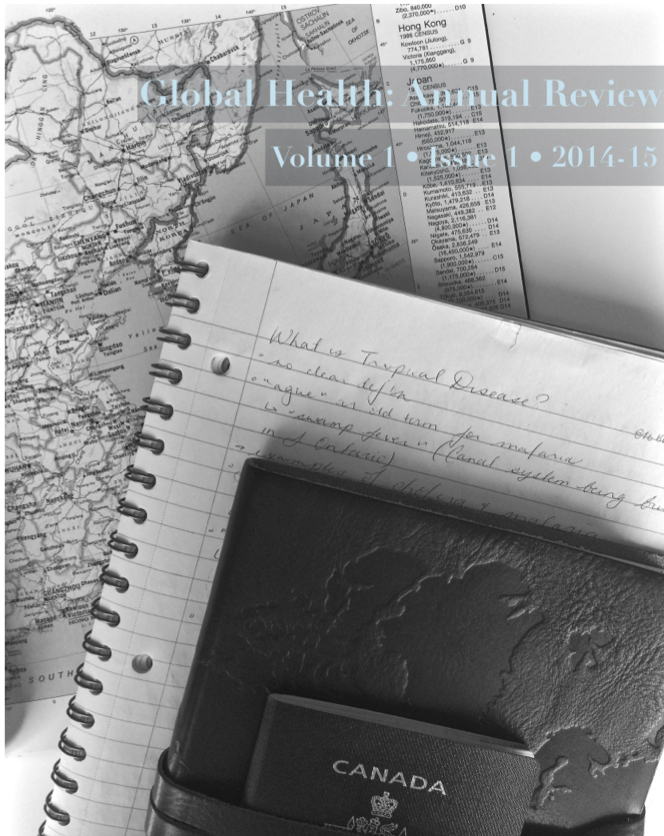The impacts of gestational weight gain in Aboriginal populations in North America: A scoping review
Résumé
Background: Global gestational weight gain (GWG) is a major global issue, with rates increasing above predicted values (2). Previous research shows that excessive or inadequate weight gain during pregnancy results in adverse maternal and child outcomes (2). To date, a review on GWG in Aboriginal populations has not been conducted. To address the identified void, this scoping review will explore literature on the various outcomes associated with GWG in Aboriginal populations. Additionally, the beliefs and perspectives of Aborgines on GWG will be assessed.
Methods: A scoping review framework was used to conduct database searches March 2015 in Embase, Medline, CINAHL, and Web of Science. The search resulted in 38 articles. Each article was reviewed based on specific inclusion criteria and 12 articles remained.
Conclusions: It is hoped that this review will highlight the severity of Aboriginal GWG based on maternal and child outcomes and suggest a need for intervention. Aboriginal women with inadequate GWG are at a higher risk of gestational diabetes mellitus, preterm birth, are more likely to have children with Fetal Alcohol Syndrome or Fetal Alcohol Effect, have lower proportions of male infants, and have a reduced risk of preeclampsia. Aboriginal women with excessive GWG are at a higher risk of having perineal and vaginal trauma, infant macrosomia, preeclampsia, postpartum weight retention, obese children, and have a higher proportion of male infants.
Références
1. Kelly T, Yang W, Chen CS, Reynolds K, He J. Global burden of obesity in 2005 and projections to 2030. Int J Obes (Lond). 2008; 32:1431-1437.
2. Rasmussen KM, Yaktine AL. Weight gain during pregnancy; Reexamining the guidelines. Institute of Medicine and National Research Council of the National Academies, Washington.
3. Brennand EA, Dannenbaum D, Willows ND. Pregnancy outcomes of First Nations women in relation to pregravid weight and pregnancy weight gain. J Obstet Gynaecol Can. 2005; 27(10):936-944.
4. Burd L, Martsolf JT, Klug MG. Children with fetal alcohol syndrome in North Dakota: A case control study utilizing birth certificate data. Addict Biol. 1996;1(2):181-189.
5. Heaman MI, Blanchard JF, Gupton AL, Moffat ME, Currie RF. Risk factors for spontaneous preterm birth among Aboriginal and non-Aboriginal women in Manitoba. Paediatr Perinat Epidemiol. 2005;19(3):181-193.
6. Navara KJ. Low gestational weight gain skews human sex ratios towards females. PLoS ONE. 2014; 9(12):doi:10.1371/journal.pone.0114304.
7. Lowell H & Miller DC. Weight gain during pregnancy: Adherence to Health Canada’s Guidelines. Health Reports. 2010; 21(2):31-36.
8. Alber LL, Greulich B, Peralta P. Body mass index, midwifery intrapartum care, and childbirth lacerations. J Midwifery Women’s Health. 2006; 51(4):249-253.
9. Lindberg SM, Adams AK, Prince RJ. Early predictors of obesity and cardiovascular risk among American Indian children. Matern Child Health J. 2012; 16(9):1879-1886.
10. Black TL, Raine K, Wilows ND. Understanding prenatal weight gain in First Nations women. Can J Diabetes. 2008; 32(3):198-205.
11. Shen GX. Insights into weight gain during pregnancy among First Nations women living on remote reserves. Can J Diabetes, 2008; 32(3):172-173.
12. Alavi N, Haley S, Chow K, McDonald SD. Comparison of national gestational weight gain guidelines and energy intake recommendations. Obes Rev. 2013; 14(1):68-85.


